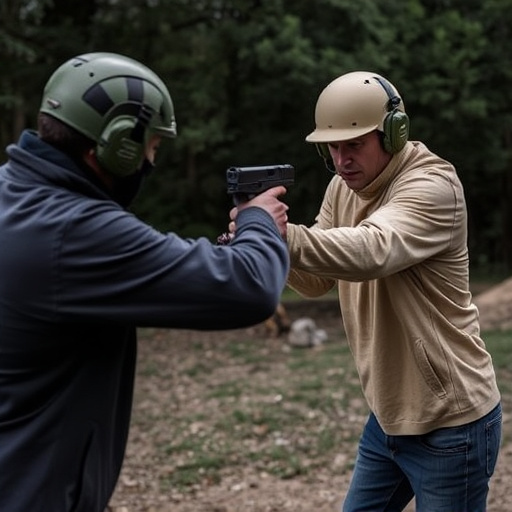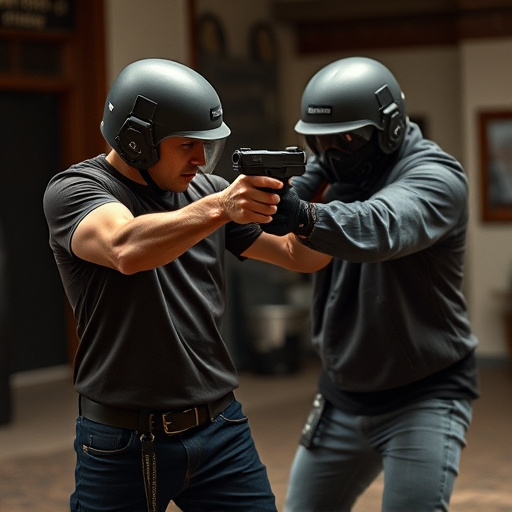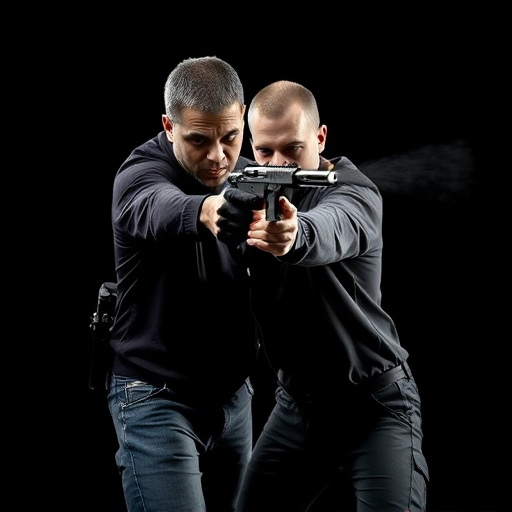Understanding concealed carry laws for stun guns is crucial for responsible self-defense. Research local rules before buying best-rated stun guns, considering voltage, size, weight limits, and unique state regulations. Power, reliability, and safety features are key when selecting models like Taser X26P or Sabre Red Flashlight Stun Gun. Legality varies across U.S. states, requiring knowledge of local laws for responsible ownership and effective self-defense strategies.
In today’s world, personal safety is a top priority. For many individuals seeking effective self-defense options, concealed carry stun guns have emerged as a viable alternative to firearms. This comprehensive guide aims to demystify the regulations surrounding these powerful tools and equip readers with knowledge about the best-rated stun guns for self-defense. From understanding intricate legalities to exploring top models and practical strategies, this article is your definitive resource for making informed decisions about personal safety.
- Understanding Concealed Carry Laws: A Comprehensive Overview
- Top Stun Gun Models: Power and Reliability Compared
- Self-Defense Strategies: When and Where to Use a Stun Gun
- Legalities and Restrictions: State-by-State Regulations Explained
- Choosing the Best Stun Gun: Factors to Consider for Maximum Safety
Understanding Concealed Carry Laws: A Comprehensive Overview

Understanding the laws surrounding concealed carry, especially regarding stun guns for self-defense, is paramount for responsible citizens looking to protect themselves and their loved ones. These regulations vary greatly from state to state, making it crucial to research and familiarize yourself with the rules in your area before purchasing a stun gun. Some states have relatively lenient hidden carry laws, allowing qualified individuals to carry non-lethal self-defense devices like top-rated stun guns without a permit. Others have strict restrictions, requiring permits and specific training.
When considering best-rated stun guns for self-defense, it’s essential to stay informed about legal requirements. This includes understanding the maximum voltage allowed, size and weight limitations, and any additional regulations unique to your state. Staying within these boundaries ensures you’re compliant with the law while enhancing your personal safety measures.
Top Stun Gun Models: Power and Reliability Compared

When considering the best-rated stun guns for self-defense, power and reliability are paramount. Several top models stand out for their impressive performance and consistent effectiveness. The Taser X26P, for instance, is renowned for its powerful jolt capable of neutralizing an assailant while also featuring advanced safety mechanisms to prevent accidental discharge.
Another highly regarded option is the Sabre Red Flashlight Stun Gun, combining a tactical flashlight with a stun gun functionality. This dual-purpose device offers exceptional brightness and a strong electrical shock, making it versatile for various self-defense scenarios. Its durable construction and user-friendly design further enhance its reliability in high-stress situations.
Self-Defense Strategies: When and Where to Use a Stun Gun

When considering self-defense strategies, a stun gun can be an effective tool to deter and disable an assailant. The best-rated stun guns for self-defense are compact, easy to use, and pack a powerful punch. They are designed to temporarily incapacitate an attacker without causing permanent harm, giving you precious time to escape or summon help.
The deployment of a stun gun is most appropriate in situations where immediate self-defense is required. This could be while walking alone at night, especially in poorly lit or remote areas, or during unexpected home invasions. It’s crucial to familiarize yourself with local regulations regarding concealed carry and use of force to ensure legal compliance when carrying a stun gun for self-defense.
Legalities and Restrictions: State-by-State Regulations Explained

The legalities surrounding concealed carry stun guns vary significantly from state to state in the U.S., with each jurisdiction having its own set of restrictions and regulations. Understanding these laws is crucial for anyone considering carrying a stun gun for self-defense, as they dictate what models, capacities, and types of stun devices are permitted. Some states have liberal policies allowing concealed carry of stun guns without a permit, while others enforce strict requirements including licensing or training certifications.
When exploring the best-rated stun guns for self-defense, it’s essential to align your choice with local regulations. Researching state-specific laws ensures compliance and enhances safety. Certain states may limit the voltage output of stun devices, prohibit specific features like lights or lasers, or require registration or reporting of stun guns owned. Staying informed about these restrictions enables responsible ownership and effective self-defense preparation.
Choosing the Best Stun Gun: Factors to Consider for Maximum Safety

When choosing a stun gun for self-defense, several key factors should guide your decision to ensure maximum safety and effectiveness. Firstly, consider the device’s power level, measured in joules. Higher joule ratings indicate more powerful shocks, which can be crucial in neutralizing an attacker quickly. However, always opt for a stun gun that falls within legal limits to avoid any potential legal complications.
Secondly, look into the stun gun’s range and delivery system. A longer reach offers more safety distance, while different delivery systems like dart or electro-magnetic pulses (EMP) have varying effectiveness. Additionally, check the device’s reliability, ease of use, and durability. Best-rated stun guns for self-defense often boast robust designs that can withstand harsh conditions and offer consistent performance when it matters most.
When considering concealed carry stun gun regulations and choosing the best-rated stun guns for self-defense, it’s essential to balance personal safety with understanding state laws. This comprehensive guide has equipped you with knowledge about various models, strategic use cases, and legal restrictions. Remember that staying informed on both self-defense options and local regulations is key to ensuring your peace of mind and compliance.
